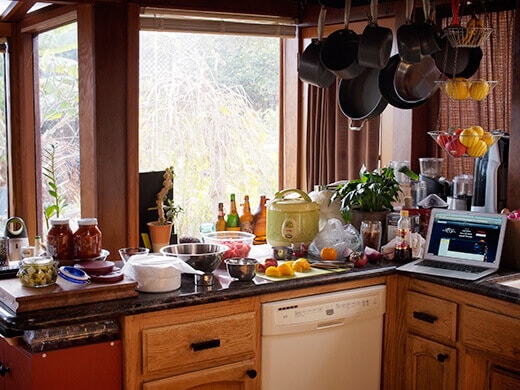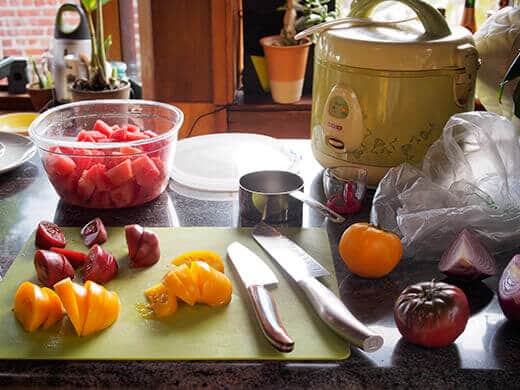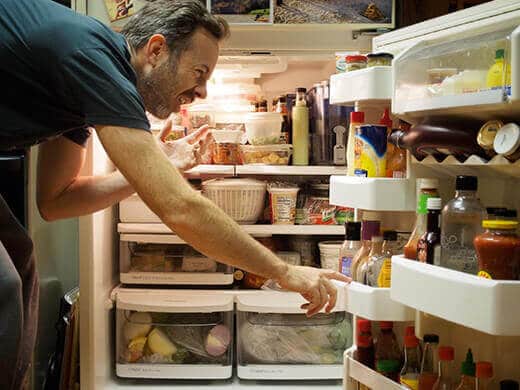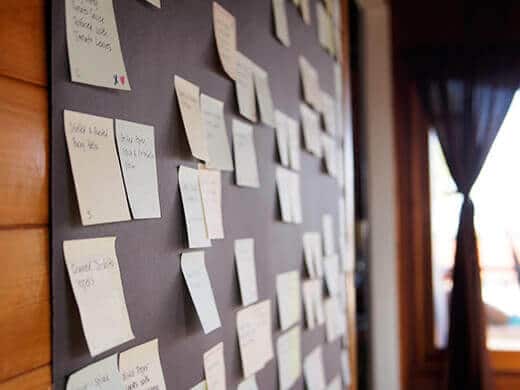Nearly six months after I announced my first book deal, the manuscript’s been turned in, the interior pages have been mocked up, and the cover’s thisclose to being finalized. (We’re hoping to wrap it up this month!)
It has been a crazy, crazy ride this year, and it’s not over yet. I kept thinking that once May passed, I’d be able to breathe a little easier with the bulk of the book behind me; but in fact, I’m much more anxious because it’s starting to come together and feel really real.
How real? Well, after a few weeks in my editor’s hands, who made sure I was staying on topic and within the page count, the manuscript is now on its way to the project manager and copyeditor, who will work through the files with a fine-tooth grammatical comb. From there, the files go to the designer, who will then lay them out into book format with the images that we’ve submitted. (“We” being Will, my ever-talented photographer, taste tester, and husband, who has devoted countless hours to the project, shooting what I’m sure has been hundreds of pounds of food!)
By fall, I could be looking at actual finished pages from my book, shortly before it goes to print overseas. (!!!)
But let’s rewind a little to January, when I was deep in the daily routine of writing, cooking, eating, going to bed while mulling over recipes in my head, and waking up instantly thinking of the food I was going to make that day.
Since my post, I’ve often been asked by curious readers and aspiring authors about the cookbook writing process. I’d call it less of a process, and more of an obsession. It’s a full-time gig, for sure. Out of the 100-plus recipes I’ve included in the book, only a handful come from the blog (the perennial favorites among Garden Betty readers).
The rest I’ve developed over winter, which is quite a challenge for a seasonal farm-to-table cookbook because, well, there’s not much happening in winter. Thank goodness for living in the year-round food paradise that’s Los Angeles, where farmers’ markets abound every week and I was able to grow some things specifically for my recipes. (Oy, the pressure of making sure I had enough pea shoots to cook with before they fully came in season here.)
For the past few months, the book’s been nothing more than a collection of sticky notes on my wall and a virtual stack of recipes on my hard drive. I’d taken over the large wood-paneled wall in our sunroom since January. On it, I hung a sheet of butcher paper adorned with stickies, standing in for the chapters and recipes in my book. I looked at this wall day in and day out, visualizing how it would all flow. Some stickies came down and others moved around. I even tried color coordinating them, but that only lasted about a week once I ran out of certain colors.

With the entire table of contents up on my wall, I got to cooking. Some of the recipes were staples I’ve relied on for years and simply refined for the book; others were new recipes inspired by my garden and started from scratch. The first couple of months, I took my time and cooked two or three days a week. But once spring rolled around and I realized I was far behind schedule, I picked up the pace and cooked four or five days a week. It was madness!


In my kitchen, there’s very little counter space and even less in the pantry; what you see here is what I get. I turned my kitchen upside down every day that I was cooking. Dishes piled on top of each other, pots and pans fought for space on the stove. With only 16 weeks to put together a cohesive cookbook, I needed to develop at least 10 recipes a week to give enough time for testing, tweaking, and retesting.
What’s involved with testing? In my case, it was a collection of mostly finished recipes without images or headnotes, sent to an intrepid group of family and friends of all ability levels. They cooked, they ate, they offered their honest feedback. I took comments like, “My aioli didn’t work!” and rewrote directions to be more concise and clear.
We often don’t think about the process the recipe writer goes through when we’re following directions, but believe me, it’s harder than it seems to craft a recipe that even a novice cook can follow (especially when you don’t have the luxury of space for step-by-step photos, as you do on a blog). When unusual preparation was involved, like the peeling and slicing of watermelon rind, the challenge was even greater. Sometimes, I felt it would’ve been easier to just invite all the future book readers to my house so I could show them!
Most of the recipes I developed worked out well on the first try, but for the ones that didn’t, it was frustrating. It meant another trip to the farmers’ market and another approach I needed to test. Our fridge was jam packed from floor to ceiling; you couldn’t even fit any of our “normal” food in there! (It’s actually a little disconcerting now that I’m able to see the back of the shelves again.)

And because I was cooking all this beautiful, healthful, organic food nearly every day, by the end of the week I’d be craving anything but that food. Give me a greasy burger that I didn’t have to grill, or a heaping plate of Parmesan-loaded penne that I didn’t have to wash, and I was a happy camper!
After months of researching, writing, cooking, and burning the midnight oil (thankfully, not the food… or at least, not too much of it), I was immensely relieved to hand in the final pages of the manuscript a couple of weeks ago. I’m now at the mercy of the publisher, which is both exciting and terrifying. But more exciting than anything!
Read the full “Making of a Cookbook” series:
- El Libro: It’s Happening!
- The Making of a Cookbook: Writing the Manuscript
- Behind the Scenes of a Cookbook Photo Shoot (Part I)
- Behind the Scenes of a Cookbook Photo Shoot (Part II)
- The Making of a Cookbook: The Cover Shot
















Linda, this is a nice honest summary. I particularly like how you would like anything but the food you were making. Much like many chefs and cooks out there.
LOL… Sitting down to a meal that someone else made (and cleared away) was very much welcome after I finished my book! I suspect it would’ve been easier if I’d been given a year to develop recipes, instead of only four months.
Congratulations Garden Betty…I am a fan of your blog and have hoped that a cookbook would be in your future, so to say the least I was thrilled to see the news. I look forward to it’s completion and delivery…count me in for one, or two etc…:)
Thanks so much Rebecca! Your support means a lot and I can’t wait for you to see it. 🙂
Your kitchen is amazing!
Aw, thank you! I’ve definitely learned how to make use of my little space.
What’s involved in writing a cookbook? Here’s my process. The Making of a Cookbook: Writing the Manuscript http://t.co/raV2aZQDUa #amwriting
And I’m at least 5 lbs heavier to show for it! The Making of a Cookbook: Writing the Manuscript http://t.co/MAqpEuyGtK #foodwriting
A look at how a book starts to come together in the beginning. The Making of a Cookbook: Writing the Manuscript http://t.co/pDaWa6IAAU
I am so excited for you! I can’t even imagine tackling a cookbook. I love to cook, but that schedule and pressure would terrify me! I can’t wait to see the finished product. Coming from a published author, trust me, when you hold that cookbook in your hands, every minute you spent on it will be worth it. Ten times over. Congrats!
Thanks Lisa! I’ll admit that I had no idea what I’d originally gotten myself into. I might ask for a little more time on the next book! LOL
Every time someone asks me when it’s coming out, saying “next spring” always feels like eons away… It’ll be so bizarre by the time “next spring” actually does arrive!
My life (more like obsession) for the last 6 months. The Making of a Cookbook: Writing the Manuscript http://t.co/IzbKHUOs5m #amwriting
Yay! Can’t wait for the book 🙂
Thanks Susan! Stay tuned. 🙂
Blogged on Garden Betty: The Making of a Cookbook: Writing the Manuscript http://t.co/oPfY4zFnVH